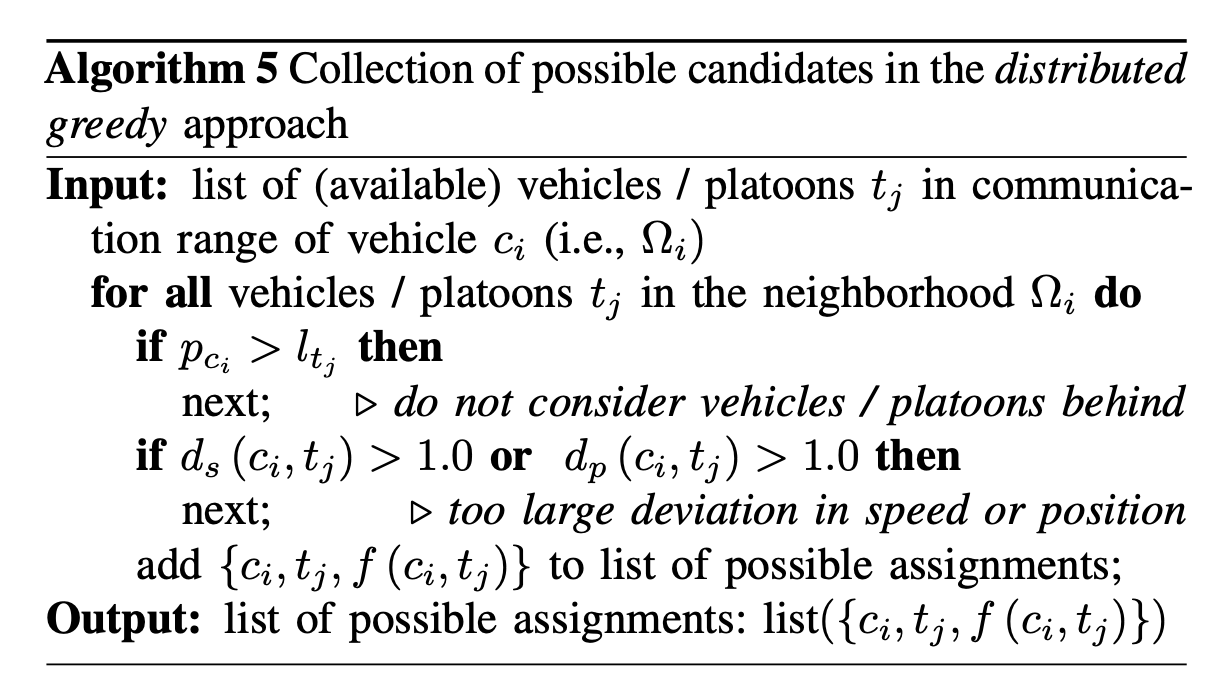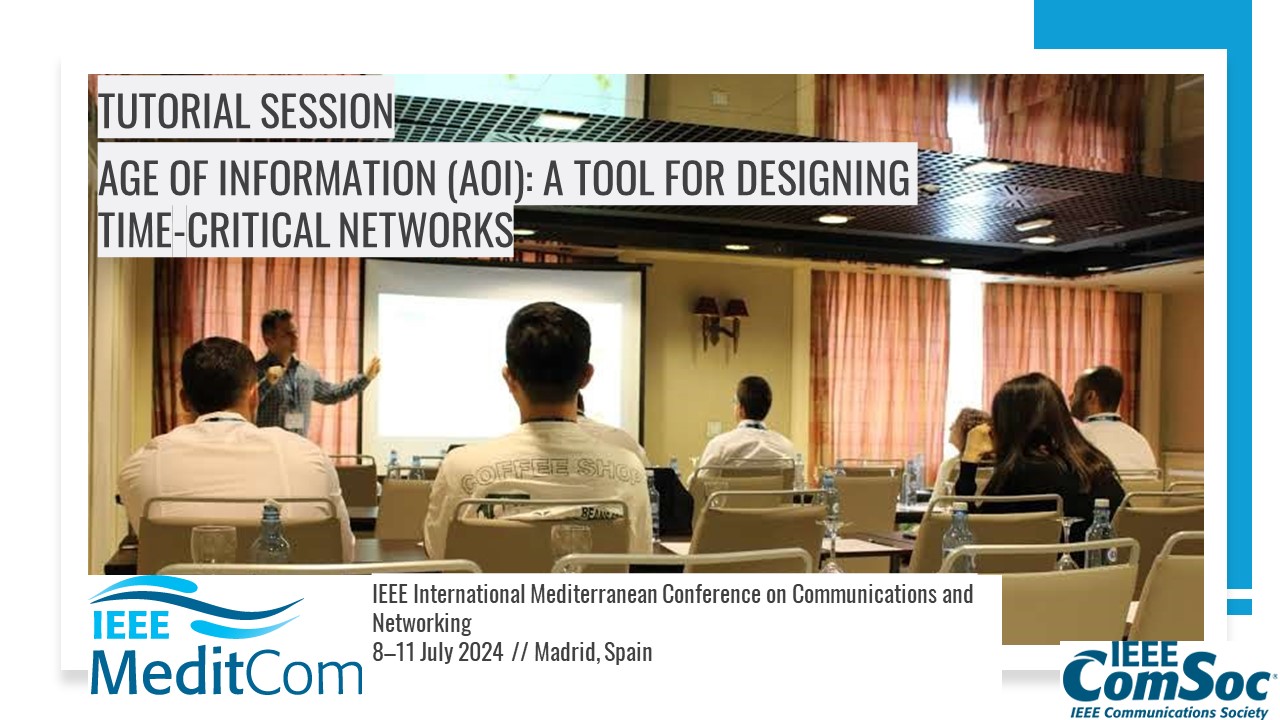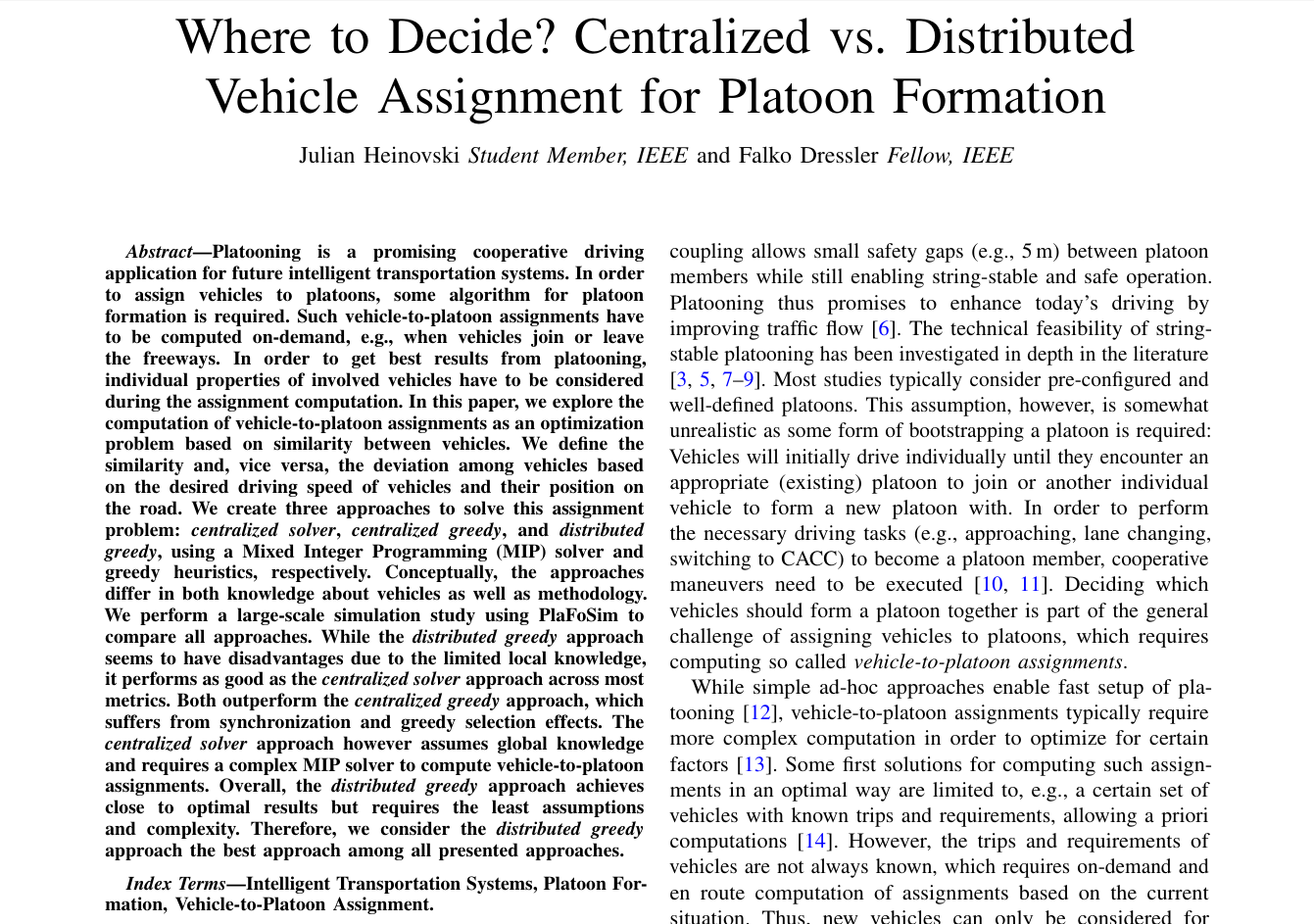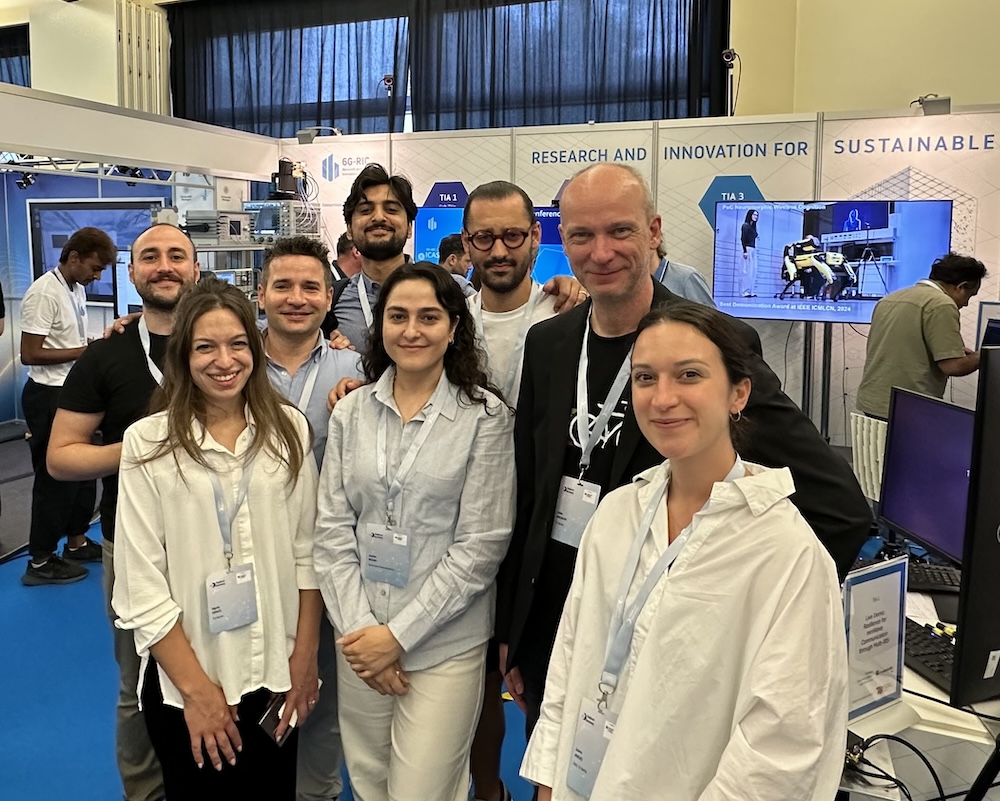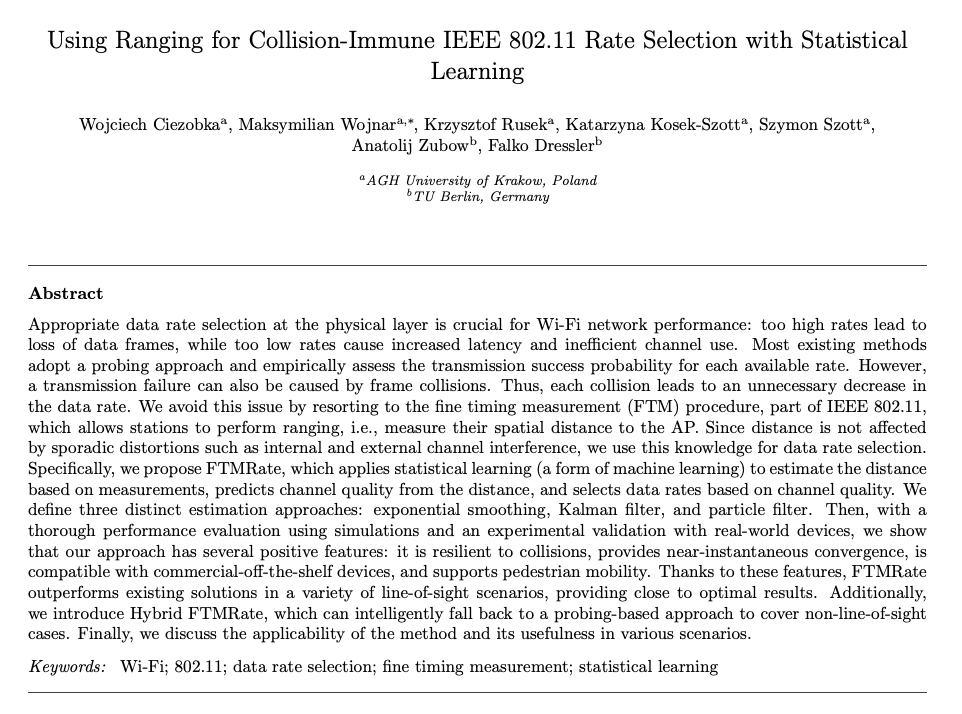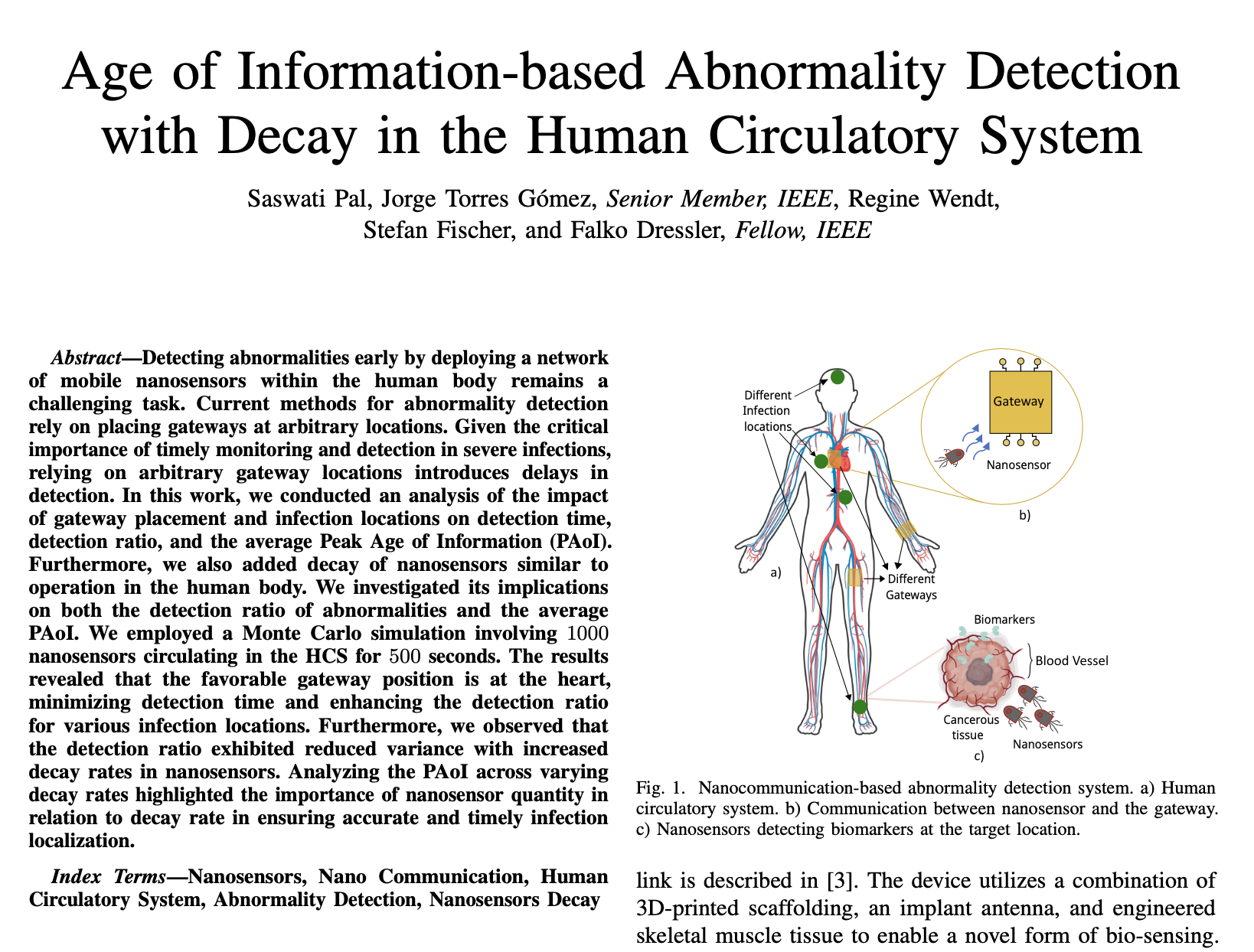Literature Database Entry
gulec2023computational
Fatih Güleç, Falko Dressler and Andrew W. Eckford, "A Computational Approach for the Characterization of Airborne Pathogen Transmission in Turbulent Molecular Communication Channels," IEEE Transactions on Molecular, Biological and Multi-Scale Communications, vol. 9 (2), pp. 124–134, June 2023.
Abstract
Airborne pathogen transmission mechanisms play a key role in the spread of infectious diseases such as COVID-19. In this work, we propose a computational fluid dynamics (CFD) approach to model and statistically characterize airborne pathogen transmission via pathogen-laden particles in turbulent channels from a molecular communication viewpoint. To this end, turbulent flows induced by coughing and the turbulent dispersion of droplets and aerosols are modeled by using the Reynolds- averaged Navier-Stokes equations coupled with the realizable k − ε model and the discrete random walk model, respectively. Via simulations realized by a CFD simulator, statistical data for the number of received particles are obtained. These data are post-processed to obtain the statistical characterization of the turbulent effect in the reception and to derive the probability of infection. Our results reveal that the turbulence has an irregular effect on the probability of infection, which shows itself by the multi-modal distribution as a weighted sum of normal and Weibull distributions. Furthermore, it is shown that the turbulent MC channel is characterized via multi-modal, i.e., sum of weighted normal distributions, or stable distributions, depending on the air velocity.
Quick access
Original Version ![]() (at publishers web site)
(at publishers web site)
Authors' Version ![]() (PDF on this web site)
(PDF on this web site)
BibTeX ![]()
Contact
Fatih Güleç
Falko Dressler
Andrew W. Eckford
BibTeX reference
@article{gulec2023computational,
author = {G{\"{u}}le{\c{c}}, Fatih and Dressler, Falko and Eckford, Andrew W.},
doi = {10.1109/TMBMC.2023.3273193},
title = {{A Computational Approach for the Characterization of Airborne Pathogen Transmission in Turbulent Molecular Communication Channels}},
pages = {124--134},
journal = {IEEE Transactions on Molecular, Biological and Multi-Scale Communications},
issn = {2332-7804},
publisher = {IEEE},
month = {6},
number = {2},
volume = {9},
year = {2023},
}
Copyright notice
Links to final or draft versions of papers are presented here to ensure timely dissemination of scholarly and technical work. Copyright and all rights therein are retained by authors or by other copyright holders. All persons copying this information are expected to adhere to the terms and constraints invoked by each author's copyright. In most cases, these works may not be reposted or distributed for commercial purposes without the explicit permission of the copyright holder.
The following applies to all papers listed above that have IEEE copyrights: Personal use of this material is permitted. However, permission to reprint/republish this material for advertising or promotional purposes or for creating new collective works for resale or redistribution to servers or lists, or to reuse any copyrighted component of this work in other works must be obtained from the IEEE.
The following applies to all papers listed above that are in submission to IEEE conference/workshop proceedings or journals: This work has been submitted to the IEEE for possible publication. Copyright may be transferred without notice, after which this version may no longer be accessible.
The following applies to all papers listed above that have ACM copyrights: ACM COPYRIGHT NOTICE. Permission to make digital or hard copies of part or all of this work for personal or classroom use is granted without fee provided that copies are not made or distributed for profit or commercial advantage and that copies bear this notice and the full citation on the first page. Copyrights for components of this work owned by others than ACM must be honored. Abstracting with credit is permitted. To copy otherwise, to republish, to post on servers, or to redistribute to lists, requires prior specific permission and/or a fee. Request permissions from Publications Dept., ACM, Inc., fax +1 (212) 869-0481, or permissions@acm.org.
The following applies to all SpringerLink papers listed above that have Springer Science+Business Media copyrights: The original publication is available at www.springerlink.com.
This page was automatically generated using BibDB and bib2web.

